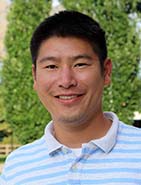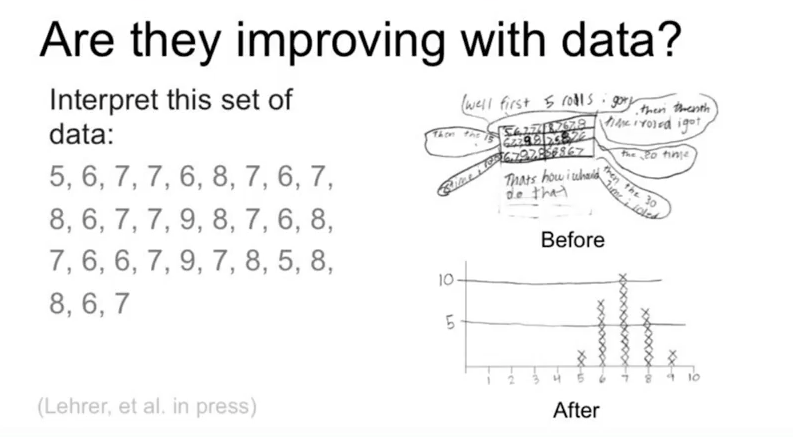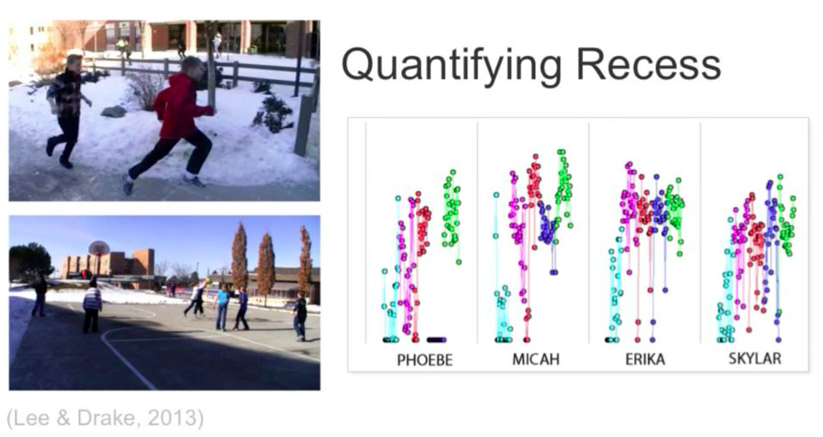Quantifying in the Classroom
Ernesto Ramirez
November 19, 2014
Victor Lee makes data fun for kids. Victor is an assistant professor at Utah State University, where he’s been working on ways to bring the Quantified Self experience into high school classrooms to improve data literacy and expose students to “more authentic forms of inquiry.”
I first met Victor at the 2013 Quantified Self Global Conference, where we had a great conversation about QS and education. A few weeks ago, I saw this wonderful presentation of his research (a video is embedded below). I couldn’t resist the chance to ask him a few questions about his work.
If you are a teacher or a parent interested in using QS as a way to get kids into math and science, we want to especially invite you to QS15: The Quantified Self Global Conference and Exposition, where QS and Education is an important theme.
QS: What inspired you to work on data literacy as a subject area?
 Victor Lee: On the one hand, the first time I had a wearable device (a heart rate monitor, several years ago), I was impressed with the data I could receive and what kind of inferences I could make from them. This made me aware of an opportunity with the technology. At the same time, I know from my training and work as a learning scientist that data can be notoriously difficult for students (and adults) to understand and use. I have done a lot of work in the area of science education previously, and finding ways for kids to meaningfully work with and learn from data is one of the big challenges that have been documented for quite some time. Plus, the topic of data literacy is timely in that we have much greater access to data in so many forms, whether it is charts showing how the Earth’s climate is changing or if it is infographics that make the rounds on the internet. There is a lot of talk about “big data”, and if we are going to have the next generation of workers and citizens be ready to work with all of that data, we really need to work on supporting that literacy now.
Victor Lee: On the one hand, the first time I had a wearable device (a heart rate monitor, several years ago), I was impressed with the data I could receive and what kind of inferences I could make from them. This made me aware of an opportunity with the technology. At the same time, I know from my training and work as a learning scientist that data can be notoriously difficult for students (and adults) to understand and use. I have done a lot of work in the area of science education previously, and finding ways for kids to meaningfully work with and learn from data is one of the big challenges that have been documented for quite some time. Plus, the topic of data literacy is timely in that we have much greater access to data in so many forms, whether it is charts showing how the Earth’s climate is changing or if it is infographics that make the rounds on the internet. There is a lot of talk about “big data”, and if we are going to have the next generation of workers and citizens be ready to work with all of that data, we really need to work on supporting that literacy now.
QS: Your research involves students using wearable devices to generate and explore their own data. Why is having their own data an important part of this process?
VL: Informally, I talk about the benefit of wearables as helping to make it so that students have some “skin in the game”. Data that is about you is consequential because at some level, it reveals something about who you are and the things you do. In some sense, there is something inherently interesting about learning more about yourself and also comparing yourself against others or against the goals that you have set. But beyond that, there is a lot to leverage in the way of learning. One of the big ideas out of education and the learning sciences, and one that I can’t reiterate enough, is the importance of building on prior knowledge. When you look at data about yourself, you don’t strictly see points or dots or bars. You see a depiction of an experience or activity that is already intimately familiar. In some sense, you know why the data look the way that they do. If it’s exercise data, you remember what certain moments felt like. You have some expertise on how your body works and that creates some expectations and support for thinking with data. That is a really important bit of personal knowledge to leverage.
Wearables are also useful in that they expose students to some of the messier things that come along with data. You have to realize that a tracking device is doing some form of measurement and measurements are prone to some error. You get so much data that you can start to see typicality and patterns. Data are hard to collect, but being able to wear something that collects data in the background means you can collect a lot of data and see what regularity looks like. You get to see what noise looks like. You get to know what is an outlier and how that fits against the larger set of data. Too often in school, we are given these very sanitized data experiences and students don’t get to think through these things or experience them in a familiar or meaningful way.
QS: Each of your examples that you discuss during your talk were student-led and defined experiments. What role does allowing students to ask the questions play in the learning process?
VL: Students are inherently curious. They have their own interests and things they care about that speak to their experiences and their concerns. A student-centered approach to instruction tries to capitalize on that. That means looking to students for questions. It also helps to put some more skin in the game. But beyond that, it helps in learning how to actually do science. If you ask most science educators, the big goal is not to memorize facts and terms but to know how science is done and how things move from questions to data to conclusions to new questions and so on. This is critically important, and there is an even greater push for new technologies and new models in education to support this. It certainly is not easy, but I think that it is worthwhile and that the kids who get to really do it find it worthwhile too.
QS: It appears that your central thesis is “When you give them the opportunity, kids can learn hard things.” Clearly from your examples this is true. Outlier analysis, data visualization, and pattern recognition are all present. What makes the methods you’re exploring so impactful?
VL: I suspect it has to do with how the students are able to leverage their own experiences and interests. It is memorable but also consequential to something that they already do or encounter. It lets them sit in the driver’s seat when they often are put in situations that makes them more of a passenger. In fact, I think that is one of the interesting things about the Quantified Self movement. In some respects, it is increasing access to data and making it possible for people to do aspects of science or mathematics or statistics in ways that are meaningful to them.
I do also want to credit some really remarkable teachers and schools that allow for activities like this to happen. Especially in this day and age with an intense focus on testing, students don’t get as many opportunities to be curious in this way. Having motivated and flexible teachers on board certainly helps make this impactful.
QS: I was really struck by the anecdotes you shared that showed how strongly the students were affected by the lessons plans (Note: fast forward to 42:40 in the video above for a great example.) Are there any other stories that come to mind that help illustrate how students engage with these type of personal data based curriculums?
VL: We recently finished a project with a school we had never worked with previously. There were some students at this school who were really disappointed that the unit ended and they would not be able to keep working with the wearable devices that we provided (in this case, Fitbit Flex wristbands). I know one student that we worked with who was so enthusiastic that he wanted to keep on doing data collection and analysis using the kinds of tools we provided and would pull a member of my research team aside to help him plan how to keep working with data after the unit had ended. I know another student was really distraught that he was going to be absent on a day that he was set to share what he had did with activity data with the rest of the class. The teacher ended up extending things another day so that student could be there and still share his discoveries.
I may have mentioned this in the presentation, but the students who discovered outlier sensitivity were so enthusiastic about what they learned that after we shut down the cameras and were leaving, they began to boast to the other students what they had figured out and proceeded to show them how outlier sensitivity worked.
QS: You’ve done some work with trying to implement QS meetups in schools and in younger age groups. What have you learned from that experience?
VL: This has been an interesting side project. Basically, I wanted to give some students who did not have the opportunity to experience QS (in this case, some very talented and motivated high school Latina girls). Those students were terrific to work with, but the experience raised some interesting challenges and concerns about how much background infrastructure that needs to be in place to be a QSer. While they all had access to mobile devices, they were not the cutting edge. Some did not have wifi at home or bluetooth. They also felt that the latest and greatest wearable devices, while cool, didn’t fit with their aesthetic. And they had some constraints on their life circumstances that limited how much they could experiment with the devices. I presented some of these findings at a workshop as part of a recent ubiquitous computing conference. There is the potential for several potential benefits with QS being accessible to youth, but I think that this is a population with very different needs and concerns than those who are early adopters. If we want QS to be something that could be of value to youth beyond a classroom curriculum, we need to do some more targeted research and development. That’s generally something that I would be glad to pursue more in the future, as I imagine are many of my professional colleagues.
QS: Lastly, what new ideas and projects are you excited about?
VL: I am excited to do a more detailed analysis of what students learned from our most recent launch of a wearables-based data unit in the sixth grade. I am excited to potentially extend some of our findings to other grade levels and finding the best ways to address how self data could be useful in supporting rich student learning. I have been generally intrigued by the QS movement and have been trying to understand why people self-track and what they end up doing with the data they collect. There are other project in my field that I think are outstanding. At UC Davis, there is some work to get self data as input into digital games. We are actually starting to explore similar issues at Utah State. There is a neat project at CU-Boulder with kids building their own infographics, and I would love for self collected data to gradually become a part of that. I have had some side conversations with some organizations who have been thinking about wearable sensors in schools, and if those conversations continue and we are able to share what we have learned, I think there is much to be excited about in that area.
We want to thank Victor for taking the time to speak with us about his work. If you’re interested in learning more about Victor’s research we invite you to visit his faculty page and read some of this great research papers, a selection of which are linked below:
Quantified Recess: Design of an activity for elementary students involving analysis of their own movement data.
Integrating physical activity data technologies into elementary school classrooms
The Quantified Self (QS) Movement and Some Emerging Opportunities for the Educational Technology Field




